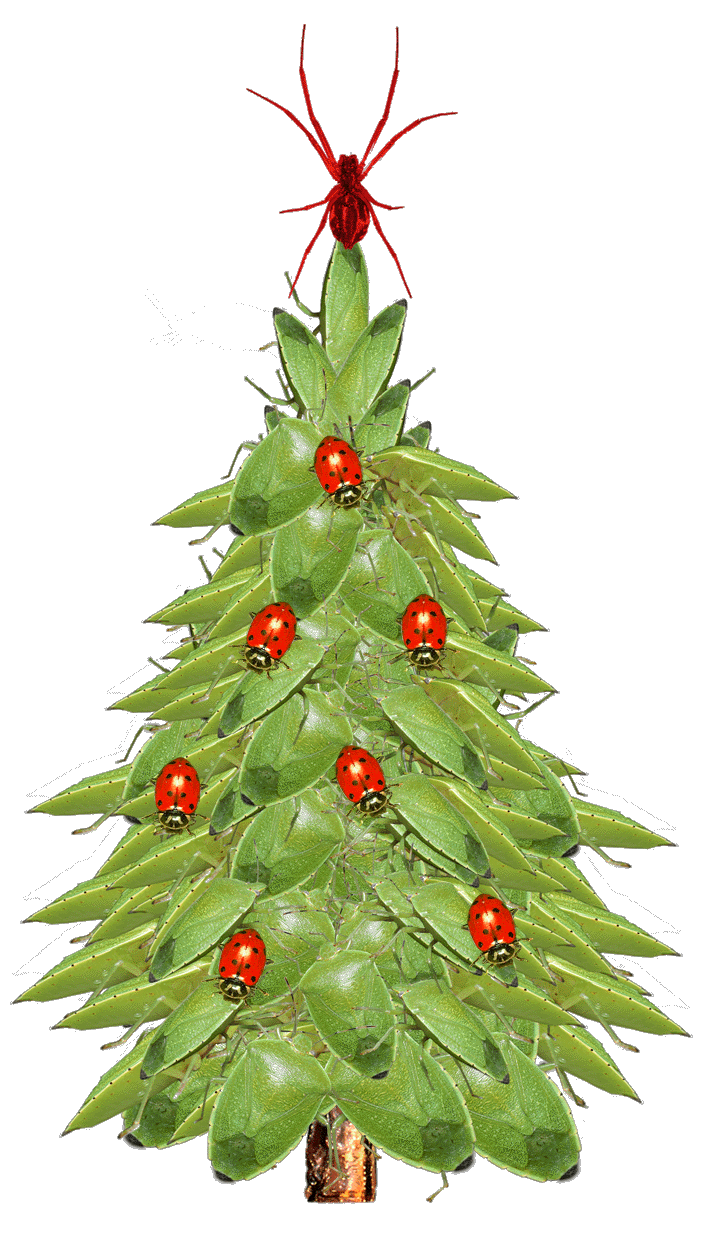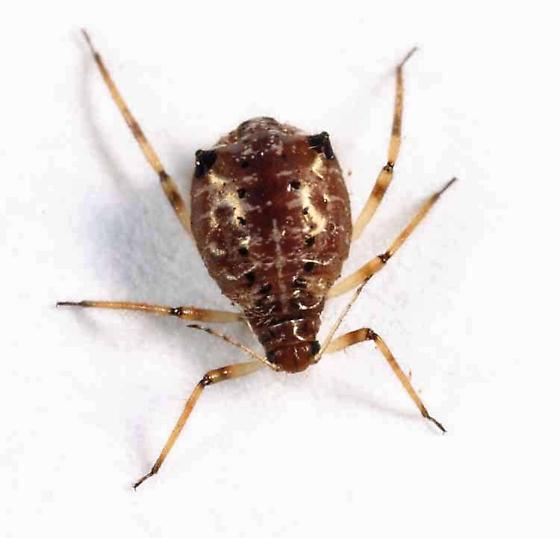 The last week in November and first three weeks in December are Christmas tree season in the U.S. All over the country, excited families take to the nearest tree lot to pick a recently cut tree for home. Some of these trees, however, come with more than just needles and flocking.
The last week in November and first three weeks in December are Christmas tree season in the U.S. All over the country, excited families take to the nearest tree lot to pick a recently cut tree for home. Some of these trees, however, come with more than just needles and flocking.
Giant conifer aphids in the genus Cinara, are among the most commonly encountered insects on fresh Christmas trees. These aphids form colonies on trees outdoors. Smaller colonies and lighter infestations are often missed by the tree farm, or by a bright-eyed family out on a U-cut adventure.

Closeup of a Cinara aphid, one of the most common Christmas tree pests. Photo by Tom Murray, courtesy Bugguide.net
Conifer aphids are sometimes mistaken for ticks by horrified tree buyers. But ticks have eight legs, and are not likely to be brought into a home on a tree. On the other hand, aphids are harmless. They feed only on plants and will not bite. Nor do they live long off a live tree, so you need not be concerned about them laying eggs on, or infesting, their ornaments.
Conifer aphids are more likely to be present on cut Christmas trees after a warm fall like this year. The warm weather encourages higher late season populations on trees.
When introduced into a warm home after sitting in a cold tree lot, conifer aphids usually become active and many will move off the tree, as discovered by a local pest control professional who contacted me today (inspiring this post). His puzzled customer saw long-legged bugs crawling over the fireplace, kitchen, and bathroom of a small apartment–not linking them to the Christmas tree in the corner.
Insecticides are not necessary or desirable for control of conifer aphids or any other insects/mites on Christmas trees. If you bring home an infested tree and it has not been decorated, encourage take the tree outdoors, shake it well, and vacuum up as many of the bugs as possible. Or better yet, return the tree to the lot for a replacement. Be sure to inspect any new tree and pound the stump on the ground several times to check for live aphids before bringing it home.
Take care not to mash conifer aphids on carpet or furnishings. They will stain.
Other pests sometimes brought in on Christmas trees include other species of aphids or adelgids, spruce spider mites, and even praying mantid egg cases. None of these are harmful, and either replacing the tree or vacuuming the offending bugs is usually sufficient.
And don’t forget that firewood can be another source of insects, especially beetles, during the winter months. A good preventive measure is to keep firewood outside until it is needed for a fire.
Luckily, none of these pests are especially common on live trees. Nor should they discourage you from bringing a fresh cut tree indoors. In my book the smell from a real Christmas tree more than makes up for the occasional arthropod hitchhiker.